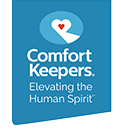Heart and Stroke Canada recommends that older adults should add muscle and bone-strengthening activities using major muscle groups at least two days per week.
The Importance of Staying Active for Seniors
Staying physically active is important at every stage of our lives, but as we grow older, it becomes especially vital. Engaging in the recommended daily amount of moderate activity (at least 30 minutes) has numerous long-term benefits, but it can also improve overall health for those with certain conditions and disabilities. Conversely, a sedentary (or inactive) lifestyle can negatively affect physical and emotional well-being, and can potentially increase risk of injury or development of diseases.
What Are Low-Impact Exercises for Seniors?
While it’s certainly no secret that physical activity is beneficial, many seniors may not know exactly what kind of exercise is most appropriate. For those that are unsure, low-impact exercise may represent the best solution. A low-impact exercise is generally defined as any workout where at least one foot stays on the floor at any given point, making it ideal for those who have limited mobility or suffer from chronic pain.
Though not as hard on the body, these exercises are not necessarily designed to be less intense, as the goal with any beneficial exercise is ultimately to elevate the heart rate. Recent research has indicated that low-impact exercise is as effective in reducing the risk of heart disease as high-impact exercise, such as running or jumping rope. If your aging loved ones are looking to get into an exercise routine, you may want to recommend the low-impact exercises listed below. Be sure that they consult a doctor or physician before beginning an exercise program. Older adults should add muscle and bone-strengthening activities using major muscle groups at least two days per week to enhance balance and prevent falls.
Low-Impact Exercises for Seniors
- Walking: One of the benefits of walking is that, unlike running, it’s easier on the joints. Plus, it doesn’t require any special equipment or a gym membership. With a comfortable pair of tennis shoes and a smooth pathway, you’ll be on your way. The key is to keep a brisk pace for at least 15-20 minutes.
- Swimming: What’s better than minimal stress on the joints? No stress at all. Swimming provides a number of benefits, including strengthened shoulders and increased lung capacity. You can also take part in water aerobics, or walk on underwater treadmills.
- Yoga: From improving flexibility and coordination to strengthening your core, there’s very little that yoga doesn’t do for you. Additionally, yoga has been shown to improve mood, focus, and overall mental well-being.
- Pilates: This exercise allows for very slow and concise movements, designed to improve posture and flexibility. Similar to yoga, Pilates are known to improve mental well-being.
- Cycling: With the proper safety measure in place (including a helmet, shin pads, and appropriate configurations), cycling can do wonders for not only the cardiovascular system but also the joints and various muscle groups.
- Weight training: Don’t be daunted by the idea of bulking up with weight machines at the gym. Weight training can be done at home, with small free weights or even moderately heavy objects that you can grip easily. Consistent repetition is key, as is advancing to heavier weights over time.
- Leg Raises: You don’t have to go far at all to do these exercises. Simply stand behind a chair, and while holding on to the back of the chair, move one leg to the side and then back. Repeating this, with different variations, can help strengthen lower back and thigh muscles.
- Dancing: In recent years, there has been a rise in the popularity of dance class enrollment – and for good reason. The constant movement in dancing classes can help circulation and flexibility. Attended these classes can also provide great opportunities to socialize and connect with others.
Comfort Keepers Can Help
Low-impact exercises can be extraordinarily beneficial for your senior loved ones, and at Comfort Keepers®, we want to help see that they have the ability to do them. Under the guidance of a physician and/or physical trainer, our caregivers can see that your loved ones are abiding by the recommended regimen. We can also help prepare healthy meals and provide safe, reliable transportation to your loved ones’ destinations in and around town. For more information, call your local Comfort Keepers office.
References:
- NIH Senior Health. “Exercise: Benefits of Exercise.” Web. 2017.
- Everyday Health. “10 Surprises About Heart-Healthy Exercise” by Beth W. Orenstein. Web. 2014.
- American Senior Communities. “The Best Low Impact Exercises for Seniors.” Web. 2017.
- AZ Central. “Low Impact Exercises for Seniors” by Kathryn Rateliff Barr. Web. 2017.
Heart and Stroke Foundation of Canada. “How Much Physical Activity Do You Need?” Web/ 2017

